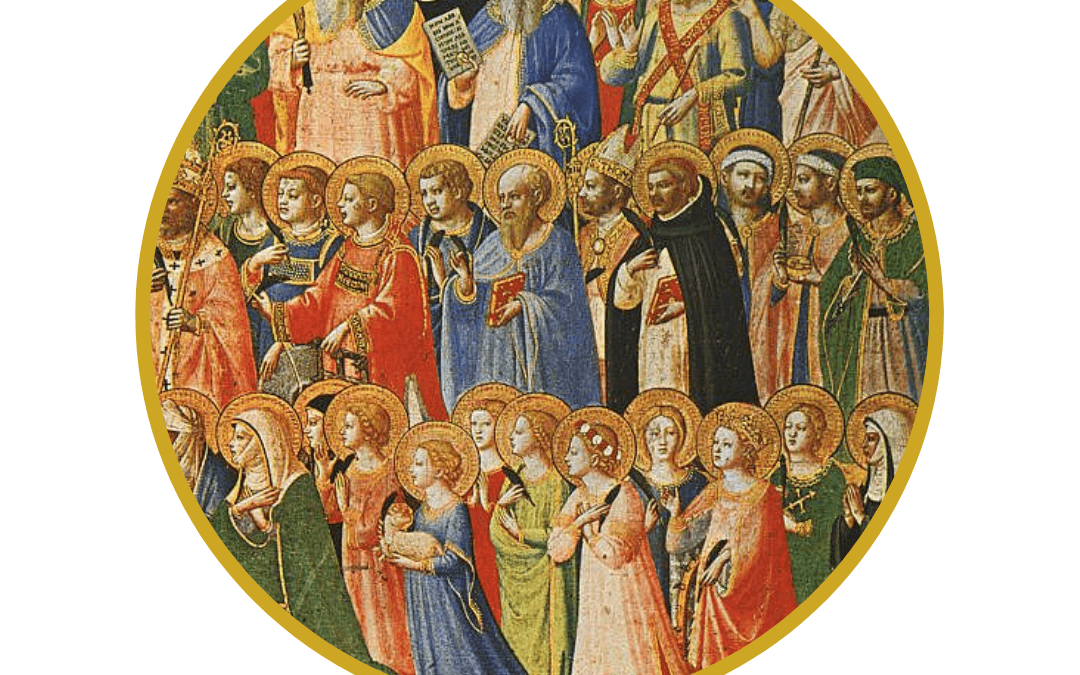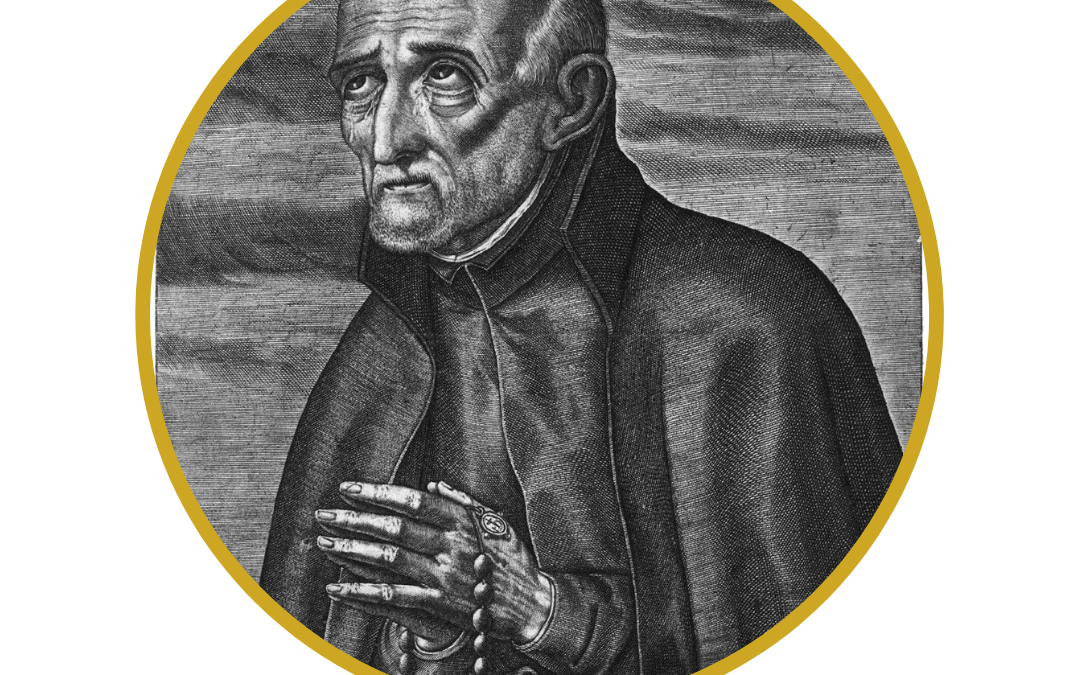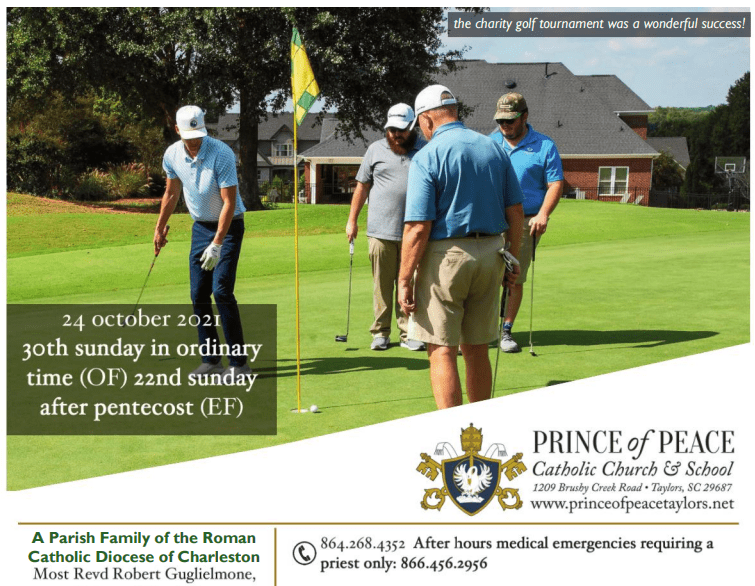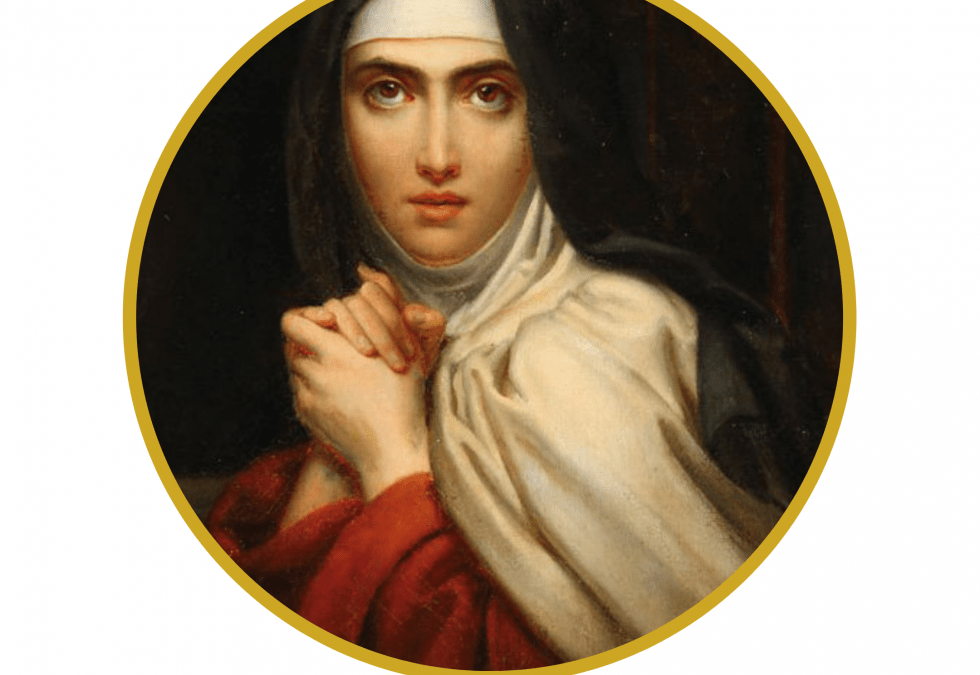
by popadmin | Oct 26, 2021 | CIC Saint Writeups
1 November: Solemnity of All Saints. Today, the Church celebrates ALL the saints, canonized or beatified, plus the multitude in heaven enjoying the beatific vision that are only known to God. This history of this feast goes back to when the Church of Antioch kept a commemoration of all holy martyrs on the first Sunday after Pentecost. Saint John Chrysostom delivered annual sermons on this day entitled “Praise of All the Holy Martyrs of the Entire World.” In the centuries that followed, the feast spread through the Eastern Church and, by the 7th century, was as a widespread public holyday. In the West, the Feast of “All Holy Martyrs” was introduced when Pope Boniface IV was given the ancient Roman temple of the Pantheon and dedicated it as a church to the Blessed Virgin Mary and all the martyrs. The dedication date was May 13, and on this date the feast was then annually held in Rome. 200 years later, Pope Gregory IV transferred the celebration to November 1, mainly so that the many pilgrims who came to Rome for the “Feast of the Pantheon” could be fed more easily after the harvest than in the spring. Meanwhile, the practice had spread of including in this memorial not only all martyrs but all the other saints as well. Finally, Pope Sixtus IV established it as a holyday of obligation for the entire Latin Church, giving it a liturgical vigil and octave. The purpose of the feast is twofold. As the prayer of the Mass states, “the merits of all the saints are venerated in common by this one celebration,” because a very large number of martyrs and other saints could not be accorded the honor of a special festival since the days of the year would not suffice for all these individual celebrations. The second purpose was given by Pope Urban IV: Any negligence, omission, and irreverence committed in the celebration of the saints’ feasts throughout the year is to be atoned for by the faithful, and thus due honor may still be offered to these saints. This Feast of All Saints should inspire us with tremendous hope. As followers of Christ, we all have this universal call to holiness. “DO NOT BE AFRAID TO BE SAINTS. Follow Jesus Christ who is the source of freedom and light. Be open to the Lord so that He may lighten all your ways.” – Pope St. John Paul II
Ideas for celebrating this Solemnity at home:
- Visiting a cemetery and praying for the dead during the Octave of All Saints’ (November 1-8) will gain a plenary indulgence that can be applied only to souls in Purgatory. Click here for requirements. Tomorrow is the Feast of All Souls: set up pictures of deceased loved ones on your home altar and pray for them. You can see how to do that here.
- Have a special meal and if you have young children, have them dress up like saints. Costume ideas at this link! Decorate your table with candles, holy cards, medals, and saint statues.
- Make (or buy!) donuts: a donut has a holein the middle of an eternal circle that could remind us of our call to holiness. They also look like little “halos” – a perfect feast day treat!
- Enjoy saint-themed snacks today: tons of ideas here at Catholic Icing.
- Craft idea: make a paper doll chain of saints!
- Make All Saints’ Day symbolic goody bagsto hand out to friends, family, neighbors: Click Here for a recipe for symbolic Saint ‘trail mix’ and labels that explain each edible Saint symbol.
- Make a home altar: click here for ideas.
- Read a saint’s story- or two! Stories of the Saints is a beautiful book to read with children. Click here for more recommendations. Or, watch a movie about the life of a saint. Many are available for free on FORMED using your parishioner account!
- Pray the Litany of the Saints— you could make it really special by chanting it and you could read an explanation of this litany, which is considered the model of all other litanies.
- Go to mass on this Holy Day of Obligation and say a rosary together as a family

by popadmin | Oct 24, 2021 | CIC Saint Writeups
30 October: Feast of Saint Alphonsus Rodriguez. Born in Spain in 1531, he was the third of eleven children. He began studies to be a Jesuit at an early age, but his father died and Alphonsus was obligated to take over the family business. He accepted this lot and in 1557 married a virtuous wife; they had three children. Within five years, his wife, two children and mother had all died. The business was also going poorly. Alphonsus sold the business and moved to his sister’s home. It was there that he learned the art of prayer and meditation in the midst of tragedy and failure. After the sad death of his last son, Alphonsus, almost 40 years old, sought to enter the Society of Jesus. They refused: he lacked a good education; was too old to start studying the priesthood; and was too weak to do a brother’s work. He tried again. Finally, they admitted him, remarking they were receiving him for his holiness. Alphonsus was appointed door-keeper of the Jesuit college at Majorca. For forty years, he remained at the same post. It was patient, humble work. Alphonsus’ holiness attracted many to seek him out. He always greeted everyone as if they were Christ. Alphonsus not only held the door key, he also had the key that helped others unlock their inner life: he understood the art of spiritual conversation. Alphonsus faced many personal battles against failure, loss, disease and temptation. He learned not to focus on himself but to see failure as a grace. He humbled himself and let failure shape him, handing himself over to the Lord in the simple service of others. He had a great horror of sin – he asked God to let him bear the torments of hell here below, rather than fall into a single mortal sin. He lived a life of severe penances. Demons would not leave this holy man alone. Twice he was thrown down a cement staircase. He was afflicted with many illnesses. When he was 60 years old, he was ordered to sleep in a bed (up until this, he slept only a few hours on a table or chair). He was told to write the story of his life, which he began with hesitation in 1604. He was misunderstood by a new Superior, but he found only joy and consolation in the public reproaches he received. He wrote in his book of maxims: “In the difficulties which are placed before me, why should I not act like a donkey? When one speaks ill of him — the donkey says nothing. When he is mistreated — he says nothing. When he is forgotten — he says nothing. When no food is given him — he says nothing. When he is made to advance — he says nothing. When he is despised — he says nothing. When he is overburdened — he says nothing… The true servant of God must do likewise, and say with David: Before You I have become like a beast of burden.” At the end of his life, Alphonsus lost even his memory and could only say, “Jesus, Mary.” On October 31, 1617, surrounded by his Jesuit brothers, Alphonsus died. He was already known and loved as a Saint by the population. In 1825 he was beatified, and was canonized in 1888 by Pope Leo XIII. He is the patron saint of Jesuit lay brothers.
Ideas for celebrating this feast day at home:
- Read Saint Alphonsus Rodriguez by Fr. John Hardon and 10 Things to knowabout St. Alphonsus
- Alphonsus wrote some excellent books on the spiritual life called the Practice of Perfection and Christian Virtuesin 3 Volumes. The set is available from the Carmelite Sisters.
- Striving for the humility of St. Alphonsus, put this verse somewhere visible as a daily reminder: “I will boast all the more gladly of my weakness, so that the power of Christ may dwell in me” (2 Cor 12:9)
- Feast day meal: a Spanish supper! Click here for several ideas; perhaps most fitting for this saint’s day would be Sopa de Lentejas (“Spanish lentil soup”) served with crusty bread.
(sources: Biography of Saint Alphonsus Rodriguez, by Abbé L. Tabourier; catholicculture.org; jcapsj.org)

by popadmin | Oct 23, 2021 | Bulletin
Click to read this week’s bulletin: 24 October 2021 Bulletin

by popadmin | Oct 19, 2021 | CIC Saint Writeups
22 October: Feast of Pope Saint John Paul II. Also known as Saint John Paul the Great, he was born Karol Jozef Wojtyla in Wadowice, Poland on May 18, 1920. His early life was marked by loss. His sister, brother and mother all died before he was 12. Growing under loving guidance of his father, he was a vibrant youth, athletic and studious. He attended Jagiellonian University, performed in local theatrical productions and co-founded the Rhapsodic Theater of Kraków. He was introduced to the mysticism of St. John of the Cross and felt called to the priesthood. His plans were interrupted when Nazis invaded Poland in 1939. To avoid deportation, Karol worked in a stone quarry and a chemical plant. He then joined a clandestine seminary and was ordained priest in 1946. He pastored a parish in Niegowic, where he began to work with young people; taking them on many camping and hiking trips. After teaching at University, he was named auxiliary bishop of Kraków in 1958 – the youngest in Poland’s history. Bishop Wojtyla made significant contributions in the Second Vatican Council. He was soon elevated to the College of Cardinals. Cardinal Wojtyła was elected Pope on October 16, 1978, and took the name John Paul II. He would have one of the longest pontificates in history, nearly 27 years. His motto was “Totus Tuus – I am totally yours.” His papacy was an embodiment of that motto. John Paul II was a vigorous missionary: he took 104 trips to 129 different countries. He loved young people and established World Youth Day. He established the World Meeting of Families and the Pontifical Institute for Marriage and Family. He aided in the gradual removal of Communism from Eastern Europe and encouraged healing between Jews, Muslims and other religions. In 1981, he was the victim of an attempted assassination. Shocking the world, he showed only love and forgiveness when he visited his attacker in prison. JP II continued his missionary work, meeting with more than 17,600,000 pilgrims during General Audiences and countless millions more in visits around the world. John Paul II’s doctrinal legacy is vast. He was a prolific writer: authoring 14 encyclicals, 15 apostolic exhortations, 11 apostolic constitutions, 45 apostolic letters, and 5 books. With emphasis on the universal call to holiness, he beatified 1,338 and canonized 482, more than all popes in the last 500 years combined. Suffering from debilitating Parkinson’s disease, Pope JP II breathed his last on April 2, 2005, the vigil of Divine Mercy Sunday, which he had instituted. His final words were “Let me go to my Father’s house.” On April 28, 2005, Pope Benedict XVI announced that the normal waiting period before beginning the cause of beatification would be waived for JP II. He was beautified in 2011 by Pope Benedict XVI and canonized by Pope Francis in 2014. “Do not be afraid! Open wide the doors for Christ!” — Pope St. John Paul II
Ideas for celebrating this feast day at home:
- FORMED has lots on JP II for children and adults! Click here.
- Feast day meal should be Polish: stuffed cabbage rolls, kielbasa and sauerkraut, Polish pierogis, OR, eat fish! JP II was an avid outdoorsman who loved to fish!
- Bake a “Pope Cake” (aka “Papal Cream Cake”): it was JPII’s favorite dessert. Recipe here.
- Decorate your table with white candles for the papacy and white roses. (Did you know there is a Pope JP II rose? It is a fragrant, pure white hybrid tea rose!)
- Read JPII’s writings here and watch the Ignatius Press movie Pope John Paul II
- Watch The Jeweler’s Shop:years before he was pope, Karol Wojtyla wrote a play on marriage. It is available as a book and a movie.
- Get outside! JP II is well-known for his love of the outdoors. In his honor, take a walk or hike, garden, go fishing, or play with your children outdoors.
- Pray the Rosary:JP II encouraged devotion to Mary. In fact, he added a set of mysteries – the Luminous mysteries, or “mysteries of light” – to the Rosary in 2002. He describes them in his apostolic letter, Rosarium Virginis Mariae
- Listen to this beautiful recording of Saint John Paul II singing the “Ave Maria” in 1976.

by popadmin | Oct 14, 2021 | Bulletin
Click here to read this weekend’s bulletin: 17 October 2021

by popadmin | Oct 10, 2021 | CIC Saint Writeups
15 October: Feast of Saint Teresa of Jesus. Also known as St. Teresa of Avila, she was born in the Spanish city of Avila in 1515. Her father was an ardent Catholic, with a collection of spiritual books of the type his daughter would later compose herself. As a child, Teresa felt captivated by the vision of God granted to the saints in heaven. She and her brother once ran away from home for the sake of dying as martyrs in a Muslim country, though a relative found them and promptly sent them back home. When Teresa was 14, her mother died, causing profound grief and prompting Teresa to embrace the Virgin Mary as her spiritual mother. After this, she struggled with a loss of her childhood zeal for God. Her father sent her to be educated in a convent of Augustinian nuns. Illness forced her to leave the convent. But the influence of a devout uncle, along with reading St. Jerome’s writings, convinced Teresa to then join the Carmelite Order at age 20. She again became seriously ill. She had severe pain and physical paralysis for two years, and afterwards remained in a painful debilitated state. For the next 20 years, she was an obedient Carmelite but struggled with physical pain and spiritual dryness. When she was nearly 40, Teresa was dramatically called to contemplative prayer. She experienced profound changes in her soul and received visions from God. During prayer, Teresa heard God speak and often became totally enraptured and even levitated. These graces reached a climax when her heart received a “transverberation” (piercing) – a mystical grace where a saint’s heart is pierced with a “dart of love” by an angel. Teresa played a significant role in the renewal of the Church that followed the Council of Trent. She proposed a return of the Carmelites to their original rule of life, a simple and austere form of monasticism (founded on silence and solitude) believed to date back to the prophet Elijah. Together with Saint John of the Cross, she founded the Order of Discalced Carmelites – “discalced,” meaning barefoot. She went on to found 30 monasteries. In 1582, Teresa’s health failed her for the last time and she died on October 15th. She was canonized in 1622. In 1970, Pope St. Paul VI proclaimed St. Teresa the first woman Doctor of the Church. She is called doctrix mystica, doctor of mystical theology. {Nine months after Teresa died, her body was exhumed and found incorrupt. Later, her heart was removed, enclosed in a crystal vessel and placed in a silver reliquary. While this was being done they beheld a glorious sight: a visible wound from the angel’s dart! It can still be seen today at the Carmelite Monastery of Alba de Tormes in Spain. Miraculously, her heart has kept its color and three sharp thorns in the heart are still visible today.}
“Let nothing affright thee, Nothing dismay thee. All is passing, God ever remains. Patience obtains all. Whoever possesses God Cannot lack anything. God alone suffices.” –St. Teresa of Avila
Ideas for celebrating this feast day at home:
- FORMED has several books and videos about St. Teresa of Avila: click here.
- Feast day food: make a Spanish recipe, such as Paella, Gazpacho, or Spanish omelet. Also, make Teresa’s Bread and St. Teresa’s Egg Yolks (Called yemas, candied egg yolks are a popular dessert in Avila.)
- Bake Carmel Apple Cookies: feasts of Teresa of Avila and Therese of Lisieux, Carmelite nuns, are in October (apple season). This cookie combines the seasonal harvest with caramel — a play on words with “Carmel”
- Read the Autobiography of St. Teresa. Her other books Interior Castleand Way of Perfection are more difficult and lofty to read, but are spiritual classics.
- For kids – Learn about “Who is St. Teresa of Avila?” using this activity from Loyola Press
- Read what Pope Benedict XVI writes about Saint Teresa of Avila, here.
- Study S Teresa’s Teaching on the Grades of Prayer and Read Demons According to St. Teresa and St. John of the Cross by Fr. Antonio Moreno.
- Pray the Litany of Saint Teresa of Jesus, The Glory of Spain






Recent Comments